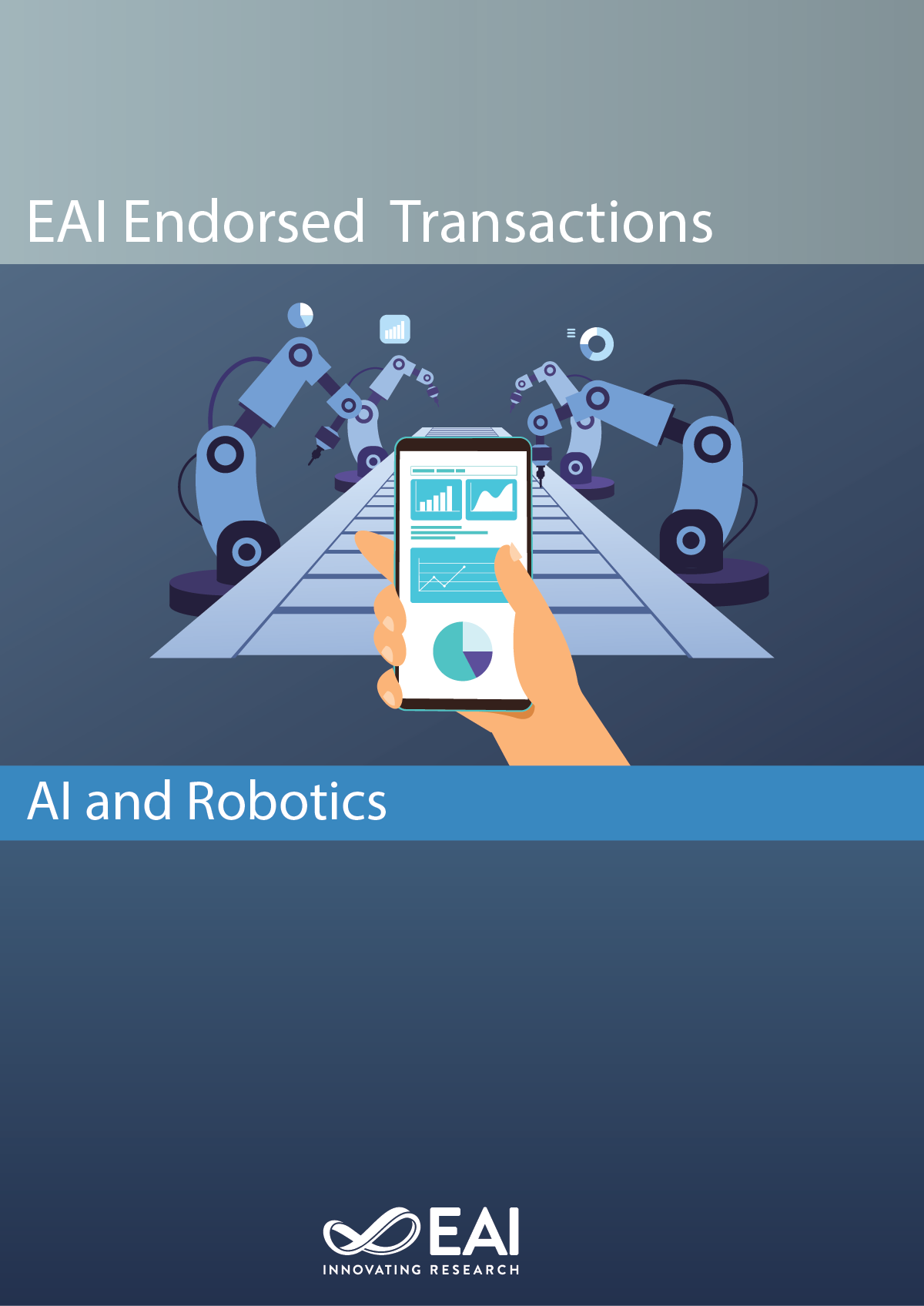Two-Stage Metal Surface Defect Detection and Classification System Based on VAEGAN and Class-Embedding
DOI:
https://doi.org/10.4108/airo.3695Keywords:
Industry 4.0, Intelligent manufacturing, Quality control, Industrial surface defect detection, Anomaly detection, Zero-shot learningAbstract
Surface defect detection is crucial in maintaining product quality across various industries. Traditional manual inspection methods are often time-consuming and subjective, which can result in inaccuracies and higher production costs. With the use of deep learning techniques, significant advancements have been made in automating the process of surface defect detection in recent years. Moreover, deep learning includes a variety of techniques, and image recognition-based deep learning is especially relevant to our field of study, which is the main focus of this research paper.
In the industrial surface defect detection field, researchers have always aimed to create a deep learning-based intelligent defect detection system that achieves near-zero defect rates while maintaining a lightweight, efficient, and cost-effective solution. However, these objectives often conflict with each other, and it is unrealistic to develop a model that can achieve all of them simultaneously. Some trade-offs must be made. If accuracy is the top priority, a large amount of defective data labeled for supervised learning is usually required. If lightweight and low cost is prioritized, a simple small model such as Auto-Encoder is usually used, along with a large number of flawless images for unsupervised learning to minimize the cost of labeling.
As mentioned before, it is very difficult to design a single model that can achieve all of them simultaneously. However, present-day studies frequently center on accomplishing those tasks using a single model and rarely address the multi-model architecture. This paper presents a Surface Defect Detection and Classification System that builds on the current state-of-the-art model in the field of surface defect detection, along with the zero-shot learning (ZSL) classifier based on VAEGAN and the Variational Auto-Encoder developed by our laboratory.
We have developed a Surface Defect Detection and Classification System that effectively integrates the aforementioned three models. It has been validated on a dataset of metal surface defects, yielding excellent results. This system not only achieves defect detection rates that comply with industrial standards and low false positive rates but also maintains characteristics such as lightweight, low latency, and low annotation cost. In addition to achieving the above goals, this system can also instantly identify and issue anomaly notifications when there are unseen anomalies, which is generally impossible to do with supervised learning anomaly detection models.
Downloads
References
Cohn R, Holm E. Unsupervised machine learning via transfer learning and k-means clustering to classify materials image data. Integrating Materials and Manufacturing Innovation. 2021;10(2):231-44.
Vahdat A, Kautz J. NVAE: A deep hierarchical variational autoencoder. Advances in neural information processing systems. 2020;33:19667-79.
Božič J, Tabernik D, Skočaj D, editors. End-to-end training of a two-stage neural network for defect detection. 2020 25th International Conference on Pattern Recognition (ICPR); 2021: IEEE.
Chandola V, Banerjee A, Kumar V. Anomaly detection: A survey. ACM computing surveys (CSUR). 2009;41(3):1-58.
Božič J, Tabernik D, Skočaj D. Mixed supervision for surface-defect detection: From weakly to fully supervised learning. Computers in Industry. 2021;129:103459.
Tabernik D, Šela S, Skvarč J, Skočaj D. Segmentation-based deep-learning approach for surface-defect detection. Journal of Intelligent Manufacturing. 2020;31(3):759-76.
Li J, Su Z, Geng J, Yin Y. Real-time detection of steel strip surface defects based on improved yolo detection network. IFAC-PapersOnLine. 2018;51(21):76-81.
Guo Z, Wang C, Yang G, Huang Z, Li G. Msft-yolo: Improved yolov5 based on transformer for detecting defects of steel surface. Sensors. 2022;22(9):3467.
Goodfellow I, Pouget-Abadie J, Mirza M, Xu B, Warde-Farley D, Ozair S, et al. Generative adversarial nets. Advances in neural information processing systems. 2014;27.
Xian Y, Lorenz T, Schiele B, Akata Z, editors. Feature generating networks for zero-shot learning. Proceedings of the IEEE conference on computer vision and pattern recognition; 2018.
Arjovsky M, Chintala S, Bottou L, editors. Wasserstein generative adversarial networks. International conference on machine learning; 2017: PMLR.
Gao Y, Gao L, Li X. A generative adversarial network based deep learning method for low-quality defect image reconstruction and recognition. IEEE Transactions on Industrial Informatics. 2020;17(5):3231-40.
Narayan S, Gupta A, Khan FS, Snoek CG, Shao L, editors. Latent embedding feedback and discriminative features for zero-shot classification. European Conference on Computer Vision; 2020: Springer.
Zhao Z, Li B, Dong R, Zhao P, editors. A surface defect detection method based on positive samples. PRICAI 2018: Trends in Artificial Intelligence: 15th Pacific Rim International Conference on Artificial Intelligence, Nanjing, China, August 28–31, 2018, Proceedings, Part II 15; 2018: Springer.
Wu H, Lv Q. Hot-rolled steel strip surface inspection based on transfer learning model. Journal of Sensors. 2021;2021:1-8.
Pan C-C. Evolution of Class Embedding for Unseen Class in Zero-Shot Learning 2021.
Xian Y, Lampert CH, Schiele B, Akata Z. Zero-shot learning—a comprehensive evaluation of the good, the bad and the ugly. IEEE transactions on pattern analysis and machine intelligence. 2018;41(9):2251-65.
Catherine Wah, Steve Branson, Peter Welinder, Pietro Per-ona, and Serge Belongie. The caltech-ucsd birds-200-2011dataset. 2011.
Liu J, Song K, Feng M, Yan Y, Tu Z, Zhu L. Semi-supervised anomaly detection with dual prototypes autoencoder for industrial surface inspection. Optics and Lasers in Engineering. 2021;136:106324.
Weimer D, Scholz-Reiter B, Shpitalni M. Design of deep convolutional neural network architectures for automated feature extraction in industrial inspection. CIRP annals. 2016;65(1):417-20.
Downloads
Published
Issue
Section
License
Copyright (c) 2023 Sheng-Tzong Cheng, Chun-Wei Yeh

This work is licensed under a Creative Commons Attribution-NonCommercial-ShareAlike 4.0 International License.
This is an open access article distributed under the terms of the CC BY-NC-SA 4.0, which permits copying, redistributing, remixing, transformation, and building upon the material in any medium so long as the original work is properly cited.





